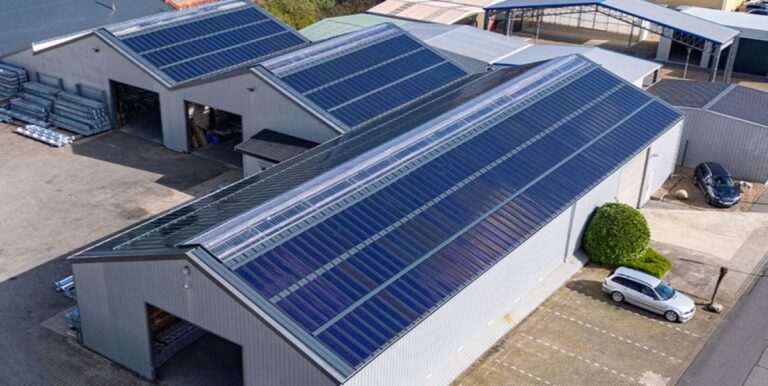German organic PV manufacturer Heliatek has announced a new series of lightweight modules. The Heliasol 436-2000-CFE-45-600V panels are IEC 61215 and IEC 61730 certified and have a 20-year lifetime warranty.
Germany-based Heliatek has announced the first product in its new range of lightweight organic PV (OPV) modules, made for low-load roofs.
The series, called Heliasol 436-2000-CFE-45-600V, complies with IEC 61215 and IEC 61730 and has a 20-year lifetime warranty.
The product is suitable for roofs or facades that require a lightweight PV solution, has an output power of 45 W, measures 2,000 mm x 486 mm x 1.8 mm and weighs 2 kg/m2. “It is certified for string voltages up to 600 V, which will be further increased in the next members of the new product line,” said Guido van Tartwijk, CEO of Heliatek. pv magazine.
The mounting can be carried out via a self-adhesive tape applied to the outer back surface. “The backing adhesive works on a wide variety of underground materials, including glass, metal, fiber cement and most membranes. For certain surfaces, a commercially available primer is included for optimal adhesion,” says van Tartwijk. The adhesive also has a lifespan of 20 years.
The minimum bending radius is 50 cm with a temperature coefficient of 0.00%/C from 25 C to 65 C and an IP 67 housing. It is based on OPV cells with three junctions in serial connection, a polymer front panel with a matte finish and a black colored back plate, also polymer based. According to the manufacturer, both the front and back covers feature ultraviolet and weather protection.
“No rare earth metals or other scarce materials are used, making the supply chain robust against geopolitical dynamics,” says Van Tartwijk.
Current aperture efficiency is in the range of 7.5% to 8.5%, with higher efficiencies in the laboratory, Tartwijk said. “Our development program therefore focuses not only on increasing laboratory efficiency, which as a theoretical limit is more than 49%, but also on reducing the lab-to-fab losses inherent in any technology,” said he.
Heliatek has invested $80 million in the development of its 5,000 m2 factory in Germany. “We have a roll-to-roll-in-vacuum inline process. All equipment has been developed in collaboration with renowned equipment builders, often custom-made. The factory is the first of its kind and designed for production with a small workforce,” Van Tartwijk explains.
The plant has an annual capacity of 0.25 GW. “This is not much for a traditional PV installation, but it is the first step for Heliatek’s technology. The market for low-static buildings is huge and is estimated at at least 400 million square meters in Europe alone,” says Van Tartwijk. “The first Heliatek plant would take decades to supply such quantities, so we obviously need more and higher capacity lines.”
pv magazine
The June 2024 bumper edition of pv magazineout today, examines the state of national power grids in key European markets as the region’s solar boom continues, considers the role small-scale PV arrays are playing in transforming the energy systems of Brazil and China, and studies the increasing importance of artificial intelligence and algorithms in generating grid-related revenue from battery locations.
With a direct sales team in the Swiss, Austrian and German markets, together with a network of installers and distributors, new partners are being sought for the South African, Brazilian and Eastern European markets.
Value-added resellers are present in the Middle East, Turkey, Singapore, Korea and Japan. As for the United States, Heliatek will address the market once it has the required certifications.
“The oldest modules have been in use since 2012,” says Van Tartwijk, adding that customers report generating more energy than expected because production starts earlier and stops later compared to conventional PV modules. Another reported advantage is that productivity at 25°C is the same as at 85°C.
The Heliatek director also pointed out that its products have a TÜV Rheinland-certified carbon footprint of 14.52 kg of CO2 equivalent per square meter, which translates into a carbon payback period that is hard to beat.
This content is copyrighted and may not be reused. If you would like to collaborate with us and reuse some of our content, please contact: editors@pv-magazine.com.


